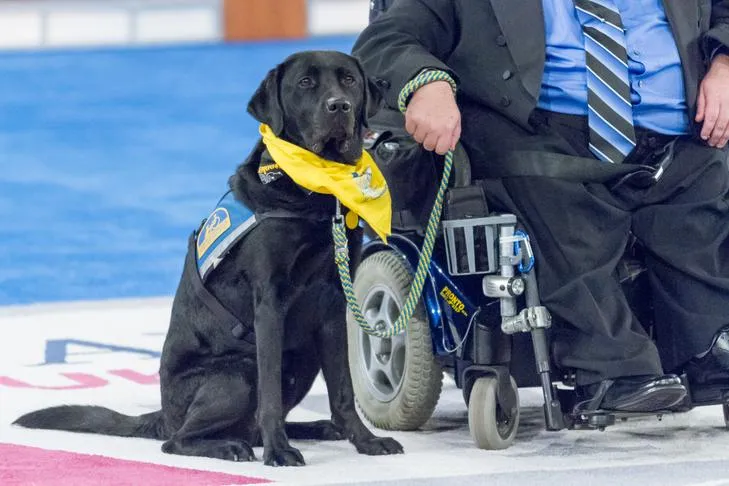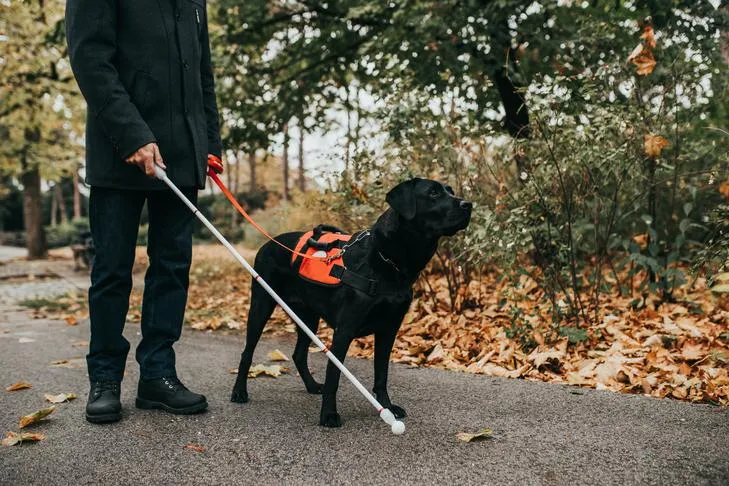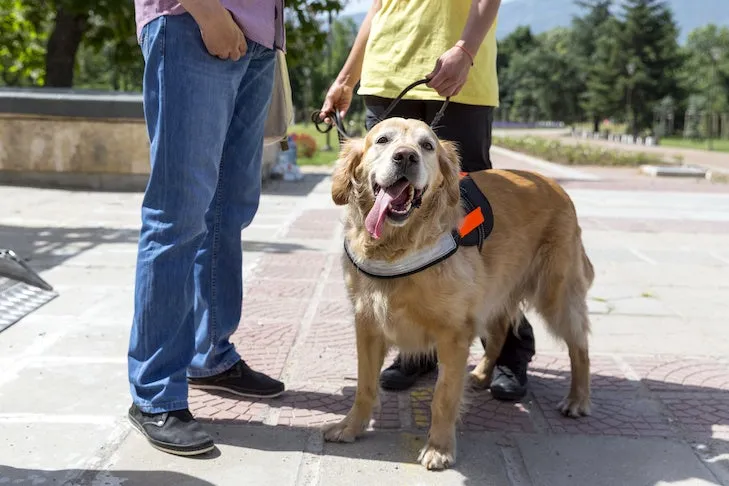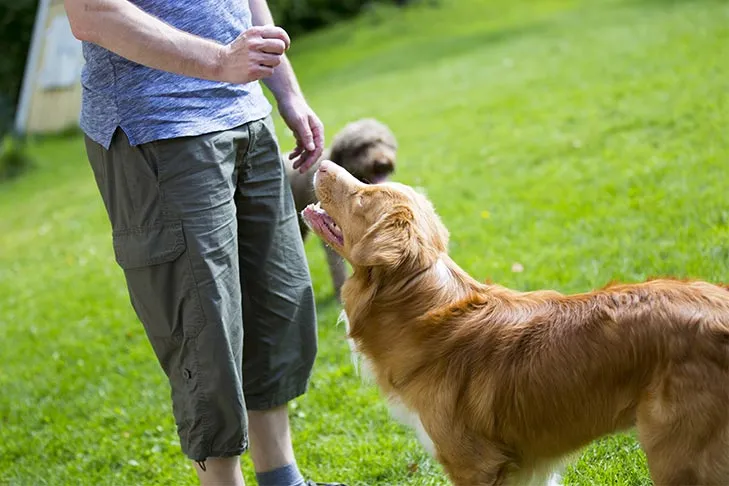The bond we share with our canine companions enriches our lives in countless ways, offering unwavering loyalty, joy, and companionship. For individuals with disabilities, this bond can extend to a profound partnership with a service dog, whose specialized training provides essential support for greater independence. While many service dogs come from professional organizations, the journey of training your own service dog from a puppy is a rewarding path for some, demanding dedication, patience, and a deep understanding of canine behavior and specialized skills. This guide will walk you through the fundamental steps and considerations for training your puppy to become a reliable service dog, emphasizing the crucial early stages of development.
Understanding the Role of a Service Dog
Before embarking on the training journey, it’s essential to grasp what truly defines a service dog. According to the Americans with Disabilities Act (ADA), a service dog is “a dog that is individually trained to do work or perform tasks for a person with a disability.” This definition is critical, as it distinguishes service animals from emotional support animals (ESAs) or therapy dogs. A service dog’s task must be directly related to the handler’s disability, ranging from guiding the visually impaired to alerting to medical conditions or assisting with mobility challenges.
Service dogs perform a diverse array of tasks. Guide dogs, for instance, help blind individuals navigate their environments. Hearing dogs alert deaf individuals to crucial sounds like alarms or doorbells. Mobility dogs provide physical assistance, such as pulling wheelchairs or retrieving dropped items. Medical alert dogs can signal the onset of a seizure or low blood sugar, while psychiatric service dogs assist with conditions like PTSD by performing tasks such as interrupting repetitive behaviors or providing deep pressure therapy. Understanding these specialized roles highlights the rigorous training and specific temperament required for a service dog, which begins in puppyhood.
Selecting the Right Puppy Candidate
The foundation of a successful service dog begins with choosing the right puppy. Not every puppy is suited for the demanding life of a service dog, regardless of breed. While certain breeds like Labrador Retrievers, Golden Retrievers, and German Shepherds are commonly seen as service dogs due to their intelligence, trainability, and temperament, many other breeds and mixes can excel. The key lies in individual traits rather than breed alone.
A potential service dog puppy should exhibit a calm demeanor, even in unfamiliar surroundings. They need to be alert without being overly reactive to their environment. A strong willingness to please, coupled with an eagerness to learn and retain information, are paramount. Crucially, the puppy must be capable of extensive socialization across many different situations and environments to ensure they remain focused and reliable under various distractions. Evaluating a puppy’s temperament, health, and lineage (if from a breeder) can provide insight into their potential. Reputable breeders often screen for traits conducive to service work, or you might find a promising candidate through rescue organizations that perform thorough temperament assessments.
 A highly trained service dog calmly assisting its handler in a public, professional environment.
A highly trained service dog calmly assisting its handler in a public, professional environment.
Early Foundations: Socialization and Basic Obedience
The journey of How To Train Your Puppy To Be A Service Dog starts with crucial foundational skills. Socialization is arguably the most vital step in preparing a service dog puppy for its future role. This involves carefully exposing your puppy to a wide variety of sights, sounds, people, animals, and environments in a positive and controlled manner. The goal is to build a confident, well-adjusted dog that is unfazed by novel experiences and can remain focused on its handler amidst distractions. Start early, ideally between 3 to 16 weeks of age, with gentle introductions to new stimuli, always ensuring a positive experience.
Simultaneously, basic obedience training forms the bedrock of a service dog’s discipline and responsiveness. Commands like sit, stay, come, down, and heel are not just tricks; they are essential communication tools that foster control and teamwork. Teach these commands consistently using positive reinforcement methods. For young puppies, focus on short, fun sessions to keep them engaged. Remember to also instill good manners early on, such as preventing your dog from jumping on people or learning proper leash etiquette. Mastering these basic skills is non-negotiable for a service dog, enabling them to navigate public spaces respectfully and safely. Regular practice in different settings will reinforce these behaviors.
House Training and Potty Management
A service dog must maintain impeccable hygiene, especially when working in public spaces. Thorough house training and teaching your puppy to eliminate on command are indispensable. Begin by establishing a consistent potty schedule and always reward successful outdoor eliminations. For detailed guidance on effective methods, explore resources on potty training essentials and understanding when to start outdoor potty training.
As your puppy progresses, you’ll want to teach them to eliminate on command in various locations. This skill is vital for service dogs, allowing handlers to manage their dog’s needs efficiently and discreetly. You can learn more about how to specifically teach dog to pee in backyard and other designated areas. Consistency and positive reinforcement are key to mastering this aspect of training.
 A Labrador Retriever service dog diligently guiding a visually impaired individual through a scenic park in autumn.
A Labrador Retriever service dog diligently guiding a visually impaired individual through a scenic park in autumn.
Advanced Training and Task Performance
Once your puppy has a solid foundation in socialization, basic obedience, and house training, you can begin to introduce more advanced concepts and eventually, task-specific training. The ADA clearly states that a service dog must be trained to perform work or specific tasks directly related to an individual’s disability. This is where the training becomes highly individualized.
For example, a puppy being trained as a mobility assistance dog might learn to retrieve specific items or open doors, while a medical alert dog might be trained to recognize and alert to subtle physiological changes. These tasks require precise training, often breaking down complex actions into smaller, achievable steps. It’s crucial to ensure that your puppy remains handler-focused and is not easily distracted, reinforcing behaviors like teaching your dog to focus on the handler and ignore distractions, as mentioned earlier. The AKC Canine Good Citizen program and its advanced levels (Community Canine, Urban CGC) can provide excellent benchmarks for public access manners and advanced obedience, ensuring your puppy is well-prepared for public environments.
 A patient Golden Retriever service dog calmly waiting beside its handler during an outdoor conversation.
A patient Golden Retriever service dog calmly waiting beside its handler during an outdoor conversation.
Public Access and Desensitization
A critical component of service dog training is extensive public access training. Service dogs accompany their handlers to places where pets are generally not permitted, making impeccable public behavior essential. This means your puppy must be trained to settle quietly at your side, remain under control in various busy environments, and ignore tempting distractions like food, other animals, and excited people. This rigorous training builds upon the earlier socialization efforts, ensuring the dog can perform its tasks reliably in real-world scenarios. It’s also vital to teach them to properly interact, or rather, not interact, with strangers in public. Practicing “leave it” and “stay” in increasingly distracting environments is key. Mastering commands like recall training for dogs is also important for safety and control in open or busy areas.
Desensitization to distractions is an ongoing process. From loud noises to crowded spaces, a service dog puppy needs to learn to remain calm and focused on its handler. This is achieved through gradual exposure, pairing potentially stressful stimuli with positive experiences, and reinforcing calm behavior. Patience is crucial, as is understanding your puppy’s limits and gradually expanding their comfort zone.
Self-Training vs. Professional Programs
The ADA affirms that individuals with disabilities have the right to train their own service dogs. This means professional certification or using a specific program is not legally required. However, the commitment involved in training a service dog is immense, often requiring thousands of hours of training.
For those undertaking self-training, strong dog training knowledge, consistent effort, and a realistic understanding of the challenges are necessary. Resources like the AKC’s “Confident Puppy” e-learning course offer foundational skills for working dogs. For those who prefer professional guidance, numerous reputable service dog organizations and trainers exist. These organizations often have high standards and extensive breeding programs, resulting in high success rates. While costs can be substantial, some organizations offer financial aid or provide dogs at no cost. Whichever path you choose, ensuring your puppy receives comprehensive, ethical, and effective training is paramount for its future success as a service dog.
 A Nova Scotia Duck Tolling Retriever puppy actively engaged in a training session in a vibrant park setting.
A Nova Scotia Duck Tolling Retriever puppy actively engaged in a training session in a vibrant park setting.
The Problem of Fake Service Dogs
A growing concern within the service dog community is the misrepresentation of pets as service animals. This harmful practice undermines the legitimate rights of individuals with disabilities, confuses the public, and tarnishes the reputation of genuine service dog teams. Poorly trained fake service animals can also pose a danger to both the public and accredited working dogs.
Organizations like the AKC and the American Service Dog Access Coalition (ASDAC) are actively working to combat this issue through public education and legislative efforts. Many states have enacted laws making it an offense to misrepresent a service animal. It’s crucial for the integrity of the service dog system that the public understands the distinction between true service dogs, emotional support animals (ESAs), and therapy dogs, none of which receive the same public access rights under the ADA as trained service dogs. Understanding and respecting these distinctions helps protect the rights and safety of legitimate service dog teams.
Final Steps and Ongoing Commitment
Training your puppy to be a service dog is a monumental undertaking, culminating in a partnership that enhances independence and quality of life. From initial temperament assessment and early socialization to advanced task-specific training and extensive public access preparation, every step requires unwavering dedication. This journey is not merely about teaching commands but about fostering a deep, trusting relationship with your canine partner.
The reward of seeing your meticulously trained puppy evolve into a capable and compassionate service dog is immeasurable. For continued learning and support, always consult with experienced trainers or reputable organizations, and prioritize your dog’s well-being and continued development. Your commitment will pave the way for a truly remarkable partnership, improving daily life for thousands.
References
- Americans with Disabilities Act (ADA) – www.ada.gov/service_animals_2010.htm & www.ada.gov/resources/service-animals-faqs/
- American Kennel Club (AKC) – Various articles on service dogs, breeds, training programs (CGC, Confident Puppy), and policy positions on misuse of service dogs. (e.g., www.akc.org/expert-advice/lifestyle/service-working-therapy-emotional-support-dogs/, www.akc.org/products-services/training-programs/canine-good-citizen/)
- Canine Companions – www.cci.org/
- NEADS World Class Service Dogs – neads.org/
- American Service Dog Access Coalition (ASDAC) – servicedogs4vets.org/american-service-dog-access-coalition/ & www.servicedogpass.org/
